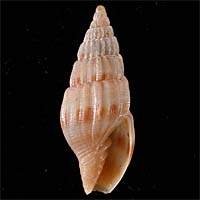|
< Previous family introduction |
|
|||||
 |
Family
Costellariidae
False mitres |
|||||
|
The family Costellariidae consists of shells of similar shape to the Mitridae, but the animals differ in anatomy. The shells of most species bear strong axial ribbing, in contrast to the Mitridae where the sculpture is predominately spiral. Some have lirae inside the outer lip, but this not an obvious or consistent character. The family falls into two groups in NSW; Indo-West Pacific and southern. The Indo-West Pacific group comprises a few species which are common with widespread distributions in the tropical Indo-West Pacific faunal zone, with strays occasionally reaching into northern NSW. The southern group comprises members of the genus Austromitra, a genus endemic to southern Australia and New Zealand, with species common in Victoria and South Australia. Costellariids are primarily sand dwellers, but some inhabit hard substrates living between or under rocks and boulders. Species are carnivorous. The new Zealand species Austromitra rubiginosa lives beneath stones in the lower littoral. It fees on ascidians, and deposits its egg capsules in their tests (Ponder, 1972); the young hatch from the capsules as crawl-away juveniles. Family Reference: Cernohorsky, W.O. 1980. Revision of the Australian and New Zealand Tertiary and Recent temperate species of the family Costellariidae (Mollusca: Gastropoda). Records of the Auckland Institute and Museum 16:109-169. Coverage: All species of the family which occur in NSW are illustrated here, with the exception of the following tropical Indo-West Pacific species which occur rarely in northern NSW.
Identification Notes: The shells in the Costellariidae are very similar to the Mitridae in general form, and in having strong plaits on the columella. They differ by usually having axial folds, and may have lirae inside the outer lip. |